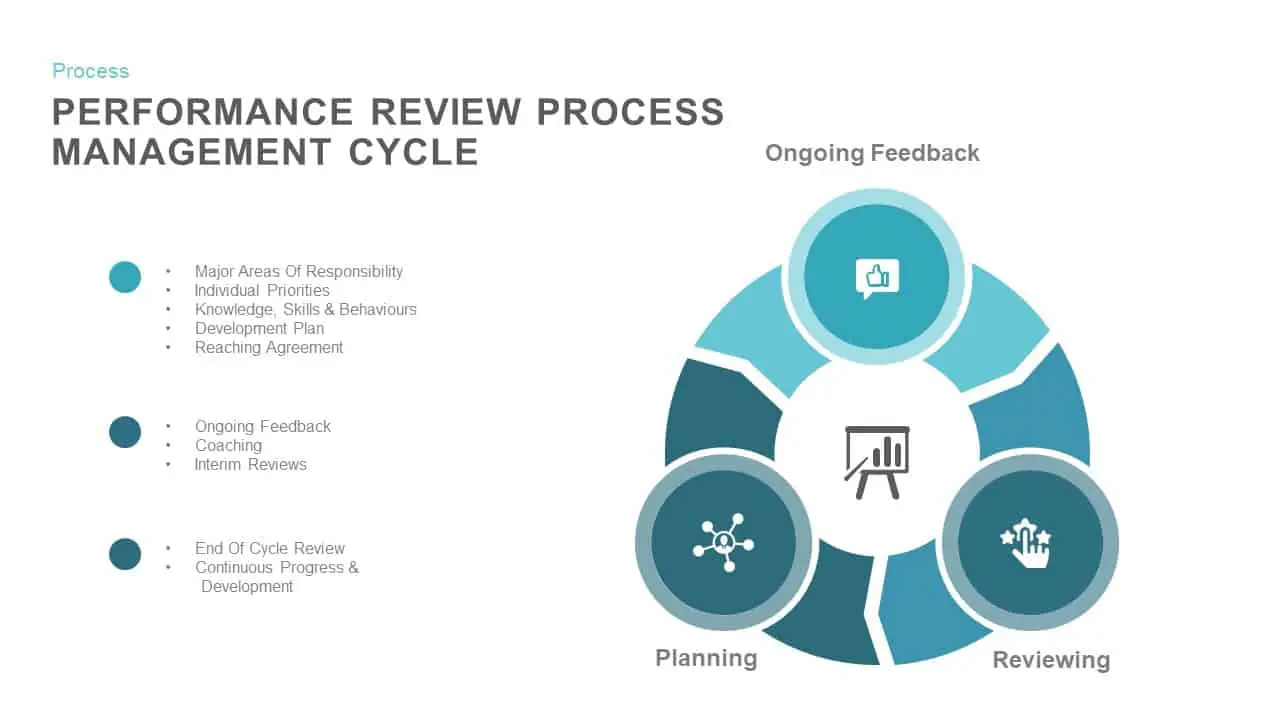Employee Performance Review

Employee’s performance review is a measure of the job activities of a worker and how well those activities were executed. Many companies assess the employee performance of each staff member on an annual or quarterly basis in order to help them identify suggested areas for improvement. A performance review is planned to calculate how you are performing in your role and to recognize any areas where training may be required. Many employees feel anxious about their performance review and consider it as negative meeting, designed for their manager to warn them. This is not the case though and the performance review is a two-way traffic; employees can express their feelings on their job and the managers can articulate their own views.
Employees should display their skills and achievements as a part of review preparation. However, in companies viewpoint, employees review should be done by managers to improve productivity. Performance reviews are a key component of employee development. It is intended to be a reasonable and balanced assessment of an employee’s performance. It should be unbiased and unprejudiced. Measuring performance factors can help know where your employee or team stands.
How can you measure employee performance?
This measurement should address three relevant questions.
• Does this employee produce what they are supposed to produce?
• Does this employee use resources well?
• Does he/she take actions to improve themselves and compatible with the environment?
These three questions have the potential to generate dozens of factors to measure employee performance.
 Whether employees are effective or not?
Whether employees are effective or not?
Productivity and quality
Productivity is one of the key factors used for employee evaluation. It specifies employee’s production in a specific amount of time. For example, how many shoes they produced in a month, or how many leads they generate in a week. These calculations are a good start. But they won’t tell the whole story. Quality is another important aspect of performance. If productivity is high, while the quality is poor, the company may face challenges from the market. To measure quality, you could think of ways to evaluate how effective each employee’s output is. For instance;
⇒ How many of their leads converted to actual sales?
⇒ How many of their customer support complaints were solved?
⇒ What percentage of their sales campaigns resulted in customer leads?
Apart from these, you can measure quality from a more negative perspective:
» What percentage of their customer complaints have been solved by others?
» What percentage of their sales calls proved unsuccessful?
It is best to make these employee performance review calculations regularly. Then, you can share the numbers with your staff and discuss them. This gives the opportunity to improve regularly, rather than once a year.
Goals and objectives of employee performance
The management can determine on what objective they measure the employee performance. The management team should find out a specific goal to determine employee’s performance. On the basis of this goal, they can measure employee performance. For instance, the management is focused on “quality,” they can make this is the parameter to define performance. Using this technique means you should sit down with your team members and set goals. If you set goals by discussing with employees, which will make them more likely to give it their total potentials.
Employees goals could be abstract (for example, improve interaction skills) or specific (for example, achieve certain targets). However, personal goals should always link into higher organizational goals; hence employees can understand how their works contribute to the entire organization. They should also understand how you monitor their work towards these goals. In this way, they’ll have a better knowledge of your expectations.
By this management objective, employers or managers can assess their employee’s performance in an easier way. “Assessment goal formation” is the key here.
• What percentage of important objectives did they meet?
• What percentage of primary/secondary tasks did they complete?
• What percentage of goals did they avoid, while finding it was unattainable?
Answering these questions will give you a precise measurement of employee performance. These measurements will also aid you to set future goals.

How to measure employee effectiveness
Attendance
This is not the usual technique to count the absent days of an employee. It is beyond mere counting. Calculating attendance makes logic for time and location-sensitive roles. If you have customer inquiries flooding in, you expect your customer support reps to be available. If they are unavailable, your response time and customer experience may suffer. Measure attendance, as per the context, then only you can analyze how well the performance was.
• Percentage of days employees checked-in late
• How frequently employees are absent
• Percentage of contracted working time lost due to absence.
• How many times did they leave from the office in an urgency situation?
Time management
Time management is a professional skill that leads to productivity and work efficiency. It is a desirable skill in most positions. Employees want to split their time successfully across their projects. You can measure employee’s time management skills by assessing the percentage of missed deadlines, turnaround time or how quickly they complete tasks. There is no need to calculate their skills on a monthly basis, quarterly or twice a year is enough. But, if you notice an employee working slower than usual, you can do something before they start missing significant deadlines. Employees should focus on the most important and time-sensitive tasks and limit the amount of time wasted on non-essential duties.
How to measure employee improvement
Training
Normally, companies are measuring the number of training programs or sessions that employee attended per year. But, the employers should analyze the outcomes of these programs, out of the numbers, and on what way this would affect employee’s performance. Do employees use what they learned? You can measure this by controlled observation, comparing their performance rating in one skill before and after relevant training. If employee performance is higher than their previous works, it is a good indication that their training was effective. The improved performance has given light on the mode of future training programs.
Initiative and innovation
It is difficult to measure the initiative and innovation of an employee. It can come in many forms. Employees might display their innovation in a variety of ways, for example, making a small suggestion to improve the work process, and sometimes provide advice for restructuring a key project. If you implemented their innovation, then only you can analyze how important suggestion was he/she made. Someone who always has fresh and different ideas can’t escape your attention. Assessing initiative and innovation doesn’t need quantifiable data. If a manager asks any this new from yours,’ it will be a proud movement to them.
360 feedbacks
360 feedbacks is a technique to gather data from peers and customers regarding employee’s performance. This direct report will be a better assessment of how employees perceive themselves and how others perceive them.

Measuring performance is a tough task but it’s the most effective way to build productive teams. To deliver your training programs on an employees performance review, slidebazaar has been developed the latest PowerPoint slides. The presenters can go through our categories and searching out performance review PowerPoint templates.


